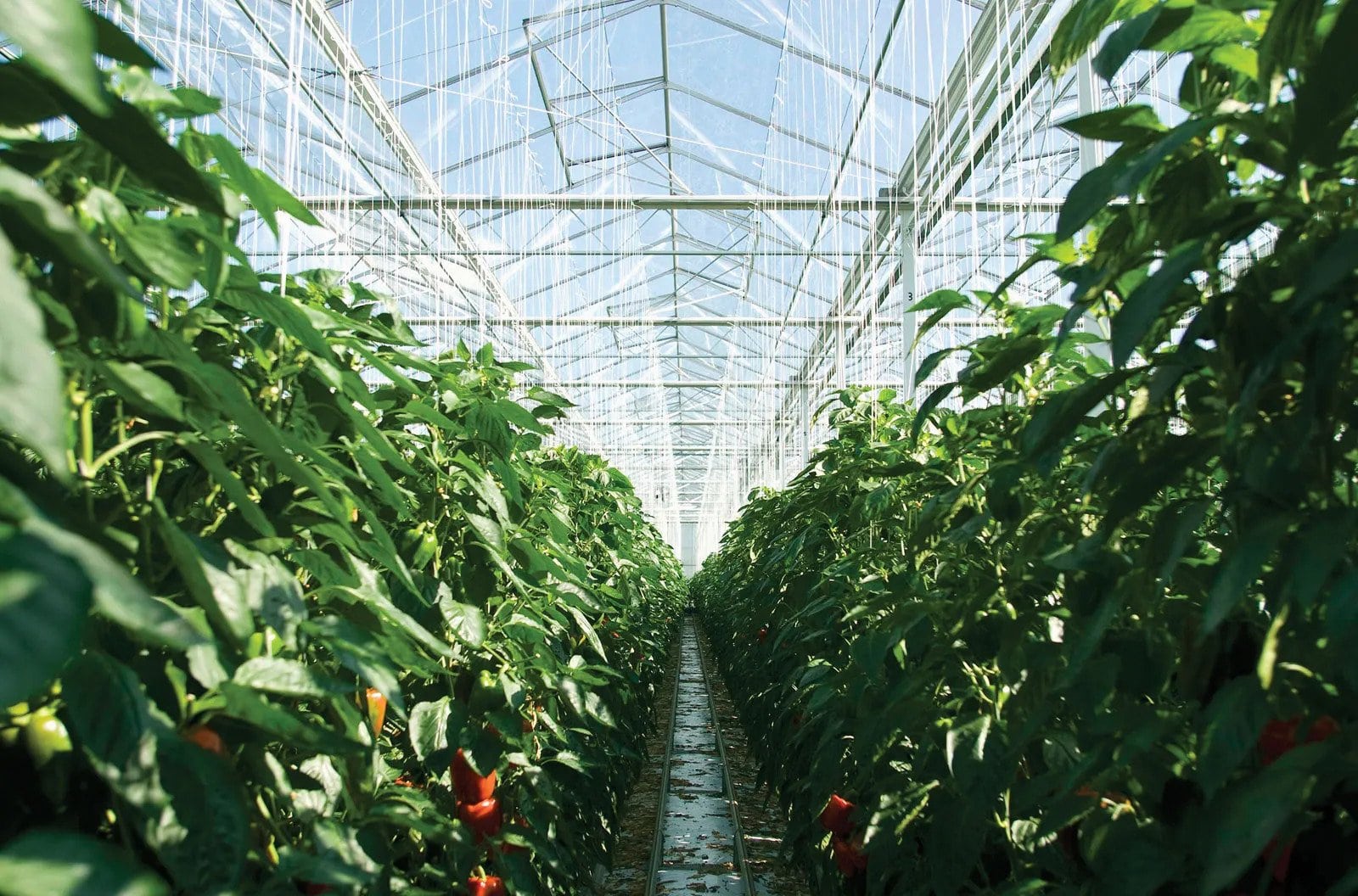Home>Gardening News and Trends>What International Agreement Attempted To Reduce Greenhouse Gas Emissions


Gardening News and Trends
What International Agreement Attempted To Reduce Greenhouse Gas Emissions
Modified: January 22, 2024
Discover the latest gardening trends and learn about the international agreement that aims to reduce greenhouse gas emissions.
(Many of the links in this article redirect to a specific reviewed product. Your purchase of these products through affiliate links helps to generate commission for Chicagolandgardening.com, at no extra cost. Learn more)
Table of Contents
Introduction
Welcome to the wonderful world of gardening! Whether you’re a seasoned green thumb or just beginning your journey into the realm of plants and flowers, it’s important to stay up-to-date with the latest gardening trends. As the seasons change and new ideas emerge, there are always exciting developments in the gardening world to explore.
Gardening is not just a hobby or a way to beautify our surroundings. It has evolved into a sustainable practice that promotes a healthy environment and helps combat climate change. Gardeners around the world are embracing new techniques and approaches to reduce their environmental impact and create thriving ecosystems.
In this article, we will dive into the top gardening trends that are shaping the way we cultivate our gardens. From eco-friendly practices to the use of technology, these trends are both practical and innovative, allowing us to enjoy the beauty of nature while making a positive impact on the planet.
So, let’s grab our gardening gloves and get ready to explore the exciting world of gardening trends!
The United Nations Framework Convention on Climate Change (UNFCCC)
The United Nations Framework Convention on Climate Change (UNFCCC) is an international treaty established in 1992 with the goal of addressing the global issue of climate change. The UNFCCC serves as the foundation for international cooperation and action on reducing greenhouse gas emissions and adapting to the impacts of climate change.
Under the UNFCCC, countries come together to negotiate and collaborate on climate-related policies and strategies. The ultimate objective is to stabilize greenhouse gas concentrations in the atmosphere at a level that prevents dangerous human interference with the climate system.
The UNFCCC has been instrumental in bringing nations together to address the urgent challenges posed by climate change. It provides a platform for discussions, knowledge sharing, and the development of common goals and targets.
One of the key achievements of the UNFCCC was the adoption of the Kyoto Protocol in 1997. This landmark agreement required developed countries to reduce their greenhouse gas emissions by specific targets during the period from 2008 to 2012.
Additionally, the UNFCCC annual Conference of the Parties (COP) brings together representatives from nearly 200 countries to review and assess progress in dealing with climate change. The COP meetings are crucial for setting global climate policy, discussing adaptation and mitigation measures, and mobilizing resources to support developing countries in their climate action efforts.
Since its inception, the UNFCCC has continued to play a prominent role in shaping international climate policy. It has paved the way for subsequent agreements, like the Paris Agreement, which build upon the principles and commitments established by the UNFCCC.
Overall, the UNFCCC provides a framework for global cooperation and collaboration on climate change. It acknowledges the shared responsibility of all nations and highlights the importance of collective action to address one of the greatest challenges of our time.
The Kyoto Protocol
The Kyoto Protocol is an international treaty that was adopted in 1997 as an extension of the United Nations Framework Convention on Climate Change (UNFCCC). Its primary objective was to set binding emission reduction targets for developed countries in an effort to combat climate change.
Under the Kyoto Protocol, participating countries agreed to reduce their greenhouse gas emissions collectively by at least 5% below 1990 levels during the commitment period from 2008 to 2012. Different countries were assigned different reduction targets based on their historical emissions and their capacity to make reductions.
The Kyoto Protocol established three mechanisms to facilitate the achievement of these emission reduction targets. These mechanisms include:
- International Emissions Trading: This mechanism allows countries to buy and sell emission allowances among themselves, providing flexibility in meeting their reduction targets.
- Clean Development Mechanism (CDM): The CDM allows developed countries to invest in emission reduction projects in developing countries and earn credits that can be counted towards their own reduction targets.
- Joint Implementation (JI): JI enables developed countries to collaborate on emission reduction projects with other developed countries, and the resulting credits can be used to meet their own targets.
The Kyoto Protocol also emphasized the importance of technology transfer and financial assistance to help developing countries reduce their emissions and adapt to the impacts of climate change.
While the Kyoto Protocol represented a milestone in international efforts to address climate change, it did face challenges and criticism. One of the main criticisms was that it did not include binding emission reduction targets for major developing countries like China and India, which have become significant contributors to global emissions.
Nevertheless, the Kyoto Protocol played a crucial role in raising awareness about the need for global action on climate change and establishing a framework for international cooperation. It set a precedent for subsequent agreements and established mechanisms for emission reductions and financial assistance.
Overall, the Kyoto Protocol marked an important step in the international community’s commitment to combating climate change and reducing greenhouse gas emissions. It laid the foundation for future agreements, including the Paris Agreement, which aimed to build on the successes and challenges of the Kyoto Protocol.
The Paris Agreement
The Paris Agreement is a landmark international treaty that was adopted in 2015 under the United Nations Framework Convention on Climate Change (UNFCCC). It represents a global effort to combat climate change by aiming to limit global warming to well below 2 degrees Celsius above pre-industrial levels and pursuing efforts to limit the temperature increase to 1.5 degrees Celsius.
Unlike previous agreements, the Paris Agreement takes a more inclusive approach by involving all countries – both developed and developing – in the collective effort to address climate change. Each country is responsible for setting its own ambitious targets, known as nationally determined contributions (NDCs), to reduce greenhouse gas emissions and enhance resilience to the impacts of climate change.
Key features of the Paris Agreement include:
- Transparency and Accountability: The agreement establishes a robust framework for tracking and reporting progress on emission reductions and adaptation efforts. Countries are required to regularly submit reports on their greenhouse gas emissions and climate actions.
- Finance and Support: The Paris Agreement emphasizes the importance of providing financial resources and support to developing countries to facilitate their transition to low-carbon and climate-resilient economies. Developed countries have pledged to mobilize $100 billion annually by 2020 to support developing countries’ climate efforts.
- Global Stocktake: The agreement includes a mechanism for periodically assessing the collective progress towards achieving the agreement’s goals. This global stocktake aims to enhance the ambition of countries’ climate targets and identify areas where further action is needed.
- Technology Transfer: The Paris Agreement promotes the transfer of environmentally friendly technologies, knowledge sharing, and capacity-building to help countries effectively mitigate and adapt to climate change.
The Paris Agreement was a significant achievement in international climate negotiations, as it brought together nearly every country in the world to take joint action on climate change. It reflects a shared commitment to address the urgent challenges of climate change and protect the planet for future generations.
Since its adoption, the Paris Agreement has gained widespread support and participation from governments, businesses, and civil society organizations. It has sparked increased momentum in global climate action, with many countries strengthening their climate commitments and implementing ambitious policies and initiatives.
While the Paris Agreement provides a promising framework for addressing climate change, it is important to ensure that countries follow through on their commitments and continue to raise their ambition over time. Regular updates and revisions of NDCs are crucial to aligning global efforts with the goal of limiting global warming and safeguarding the planet for future generations.
Comparison of the Kyoto Protocol and the Paris Agreement
The Kyoto Protocol and the Paris Agreement are two significant international climate agreements that aim to address the challenges of climate change. While they both share the common goal of reducing greenhouse gas emissions, there are key differences between the two agreements.
Scope: One of the major differences between the Kyoto Protocol and the Paris Agreement is their scope. The Kyoto Protocol primarily focused on the emission reduction commitments of developed countries, known as Annex I countries, while exempting major developing countries. In contrast, the Paris Agreement includes commitments from all countries, recognizing that climate change is a global issue that requires collective action.
Emission Reduction Targets: Under the Kyoto Protocol, developed countries had binding emission reduction targets that were legally binding. Each country was assigned a specific target based on its historical emissions and capacity to make reductions. In contrast, the Paris Agreement relies on voluntary emission reduction targets, known as nationally determined contributions (NDCs), which are set by each country. While the NDCs are not legally binding, countries are encouraged to increase their ambition over time.
Flexibility: The Kyoto Protocol offered flexibility through mechanisms such as international emissions trading, the Clean Development Mechanism (CDM), and Joint Implementation (JI). These mechanisms allowed countries to trade emissions, invest in emission reduction projects in developing countries, and collaborate on emission reduction projects with other developed countries. The Paris Agreement also provides flexibility through various mechanisms but does not specify them directly. It allows countries to choose their own means of implementing and achieving their NDCs.
Universal Participation: While the Kyoto Protocol had limited participation from developing countries, the Paris Agreement strives for universal participation. It recognizes the common but differentiated responsibilities of countries based on their differing capabilities and needs. The agreement aims to mobilize support and resources for developing countries, enabling them to enhance their climate action efforts and adapt to the impacts of climate change.
Long-term Temperature Goals: The Kyoto Protocol did not have specific temperature goals. In contrast, the Paris Agreement sets the long-term temperature goal of limiting global warming to well below 2 degrees Celsius above pre-industrial levels and pursuing efforts to limit the temperature increase to 1.5 degrees Celsius. This goal reflects the latest scientific research on the potential impacts of climate change and the need for urgent and ambitious action.
Adaptation: The Kyoto Protocol focused primarily on mitigation efforts, with limited emphasis on adaptation. The Paris Agreement recognizes the importance of adaptation to climate change impacts and calls for enhanced adaptive capacity and resilience-building. It establishes a global goal on adaptation and encourages countries to develop and implement adaptation plans and measures.
Review and Transparency: The Paris Agreement places a strong emphasis on transparency, accountability, and regular review. It establishes a robust transparency framework requiring countries to report on their greenhouse gas emissions and climate actions regularly. It also includes a global stocktake process, which reviews the collective progress towards achieving the agreement’s goals and identifies areas for further action. The Kyoto Protocol also had reporting and review processes but with fewer detailed requirements compared to the Paris Agreement.
In summary, while the Kyoto Protocol laid the foundation for international climate action, the Paris Agreement represents a more inclusive, flexible, and ambitious approach to addressing climate change. By involving all countries, emphasizing voluntary commitments, and focusing on long-term temperature goals and adaptation, the Paris Agreement aims to tackle climate change on a global scale and guide countries towards a sustainable and resilient future.
Conclusion
Gardening is a passion that goes beyond just beautifying our surroundings. It has become a means of promoting sustainability and combating climate change. As we explore the latest gardening trends, we can see how the principles of environmental consciousness and innovation are shaping the way we cultivate our gardens.
From eco-friendly practices like organic gardening, composting, and water conservation, to incorporating technology such as smart irrigation systems and sensor-based monitoring, gardeners are finding innovative ways to reduce their environmental impact and create thriving ecosystems. These trends not only benefit our gardens but also contribute to the larger goal of building a healthier planet.
Moreover, the synergy between gardening and environmental awareness extends globally. International agreements such as the United Nations Framework Convention on Climate Change (UNFCCC), the Kyoto Protocol, and the Paris Agreement have paved the way for concerted efforts to address climate change at a global level. These agreements promote cooperation, transparency, and accountability among countries to reduce greenhouse gas emissions, adapt to the impacts of climate change, and promote sustainable practices.
The UNFCCC established the framework for international cooperation, while the Kyoto Protocol set binding emission reduction targets for developed countries. The Paris Agreement built upon these foundations by involving all countries, setting long-term temperature goals, promoting adaptation measures, and emphasizing transparency and accountability.
Collectively, these agreements recognize the urgency and complexity of the climate crisis and emphasize the shared responsibility of all nations to take action. They have encouraged the adoption of more sustainable gardening practices, leading to greener and more environmentally conscious communities around the world.
As gardeners, we have the power to make a difference. By staying informed about the latest gardening trends and incorporating sustainable practices into our gardening routines, we can contribute to a more sustainable future for ourselves and generations to come.
So, let’s embrace these gardening trends, learn from the international agreements that guide us, and continue to connect with nature in a way that nurtures both our gardens and the planet.





